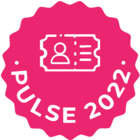In this insightful session,
The webinar kicked off with an overview of the Product-Led Growth (PLG) flywheel, which emphasizes the product itself driving acquisition, retention, and expansion. For onboarding, this translates into:
- Self-serve experiences: Users quickly find value through in-app guidance.
- User-centric design: Simplified onboarding with minimal support required.
- Frictionless experience: Tutorials and prompts reduce time to value (TTV).
- Continuous feedback loop: Insights from customers enable constant improvements.
These principles ensure that the product becomes a sustainable driver of growth and long-term engagement.
Use Case Objectives:
The webinar was divided into three levels, each designed to address onboarding challenges at different sophistication levels.
1. Beginner Level: Collect Ideal Customer Profile (ICP) Roles & Goals
At the beginner level, the focus is on mapping out your Ideal Customer Profile (ICP) to understand who your most valuable customers are and what they need from your product. Key takeaways:
- Why it matters: Tailoring the onboarding journey to the ICP increases the likelihood of successful product adoption.
- How to gather data: First, identify the key workflows (see example below) and use tools like Gainsight PX to capture user roles and objectives, monitor user engagement, and continually refine the ICP.
- Actionable Tips: Provide customized landing pages to capture user roles and objectives in-product. Click the link to see how to build.
2. Intermediate Level: Implement Role & Goal-Based Time to Value (TTV)
At the intermediate level, the webinar explored how to map the customer journey to optimize Time to Value (TTV) based on user roles and goals. The journey includes:
- Touchpoints: Welcome emails, in-app introductions, setup, training, and feedback stages.
- Example Onboarding Flow:
- Welcome & Introduction
- Role and Goal Collection
- Initial Setup and Hands-on Experience (Goal-Oriented)
- Feedback & Support
- This step-by-step approach ensures users see value from the product early and remain engaged throughout the process.
To craft an effective onboarding experience, it's essential to understand your ICP and map out the user journey. By identifying personas and their needs, you can tailor the onboarding process for clarity and engagement. Here are two examples of timeline flows based on insights from the Product Manager ICP:
3. Advanced Level: Create a Unified Onboarding Experience Across Multiple Products
For advanced users, the webinar provided strategies to create a unified but modular onboarding flow across different products:
- Personalized Journeys: Tailored experiences for individual user needs.
- Progressive Product Unlocking: Introducing products as users grow more comfortable.
- Dynamic Roadmap: A flexible onboarding journey evolving with user progress.
- Cross-product onboarding: Utilizing single sign-on (SSO) and shared user data for a seamless experience across products.
Best Practices for Effective Onboarding:
- Modular & Gradual Onboarding: Start with one product, then introduce others as users progress.
- Personalization: Tailor onboarding flows to specific user roles and business needs.
- Data-driven Insights: Use real-time analytics to refine and improve the onboarding process.
- Gamification: Motivate users with rewards and milestone tracking.
- Self-service support: Include a Knowledge Center Bot, community resources, and webinars for ongoing assistance.
Onboarding Recipes:
Key Takeaways:
- Tailored Onboarding: Collect and act on user goals to create personalized experiences.
- Time to Value (TTV): Speed up onboarding with in-app guidance and targeted training.
- Cross-product Continuity: A seamless onboarding experience across products enhances engagement and retention.
By following these practices, businesses can effectively onboard users at their own pace, leading to deeper product adoption, increased satisfaction, and long-term success.
Webinar Resources:
If you missed the live session or want to revisit the content, you can access the recording and the presentation deck at the provided links.
